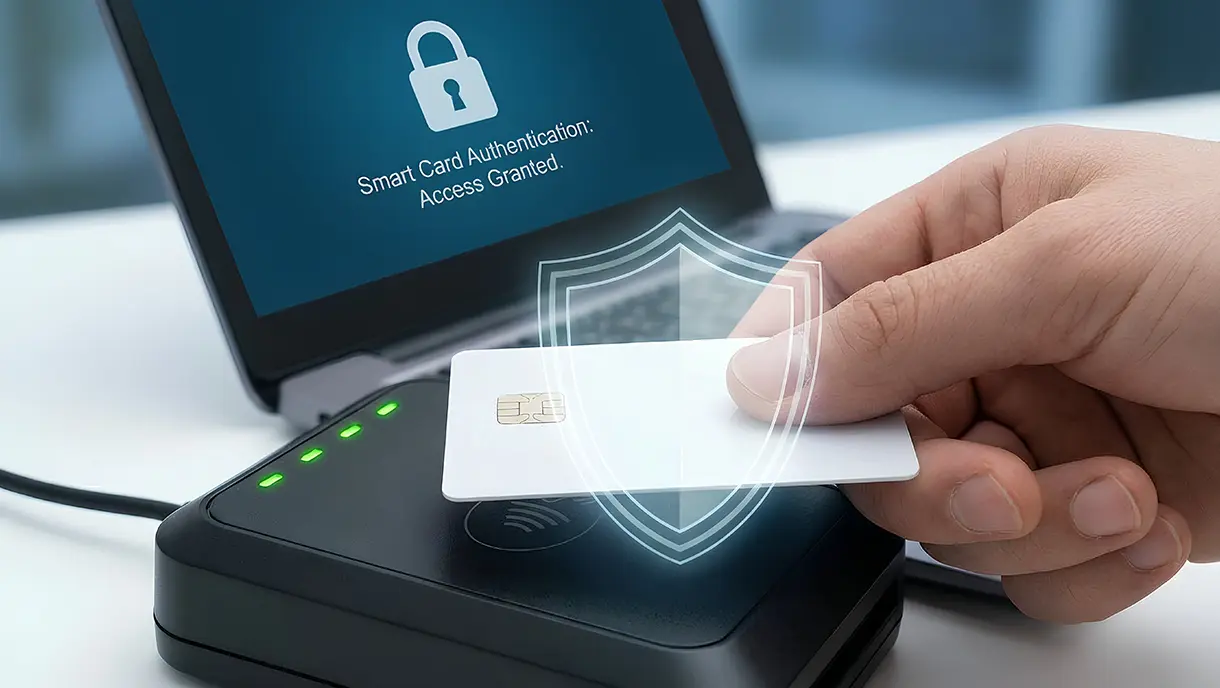Step-By-Step Guide to Seamless MFA Implementation
Effective MFA implementation is crucial for protecting organizations against password breaches and unauthorized access. This blog offers a step-by-step guide to deploying multi-factor authentication, from assessing infrastructure to training users and optimizing performance. Learn about common implementation pitfalls, their solutions, and best practices to simplify multi-factor authentication adoption while strengthening overall security.

How do you roll out multi-factor authentication without frustrating users? Which MFA methods best fit your existing infrastructure? And how can you ensure smooth adoption across teams without compromising security?
These are the challenges most organizations face once they move past the “why MFA?” stage and reach the more complex “how to implement it effectively” phase. According to a Microsoft report, organizations using MFA block over 99% of automated cyberattacks, but only when the implementation is planned, executed, and managed correctly.
This guide walks you through the step-by-step MFA implementation process, from defining your security goals to selecting the right authentication platform. You’ll also learn about common pitfalls to avoid and how to ensure your deployment delivers both strong protection and a frictionless user experience. Let’s get started.
What Is MFA and How Does It Work?
Multi-factor authentication is a security method that requires users to prove their identity through multiple verification steps. Instead of just entering a password, users must provide two or more different types of credentials.
These credentials come from separate categories to ensure stronger protection. MFA makes it extremely difficult for hackers to gain access, even if they steal your password. As new MFA trends continue to evolve, organizations are adopting advanced authentication methods, such as biometrics and passwordless verification, to enhance both security and user convenience.
MFA implementation requires at least two of these independent factors working together. The system only grants access when all necessary verifications are successful. This layered approach dramatically reduces the risk of unauthorized access to your systems and data.
10 Steps to Successful Mult-Factor Authentication Implementation
Implementing MFA across your organization requires careful planning and execution. Follow these proven steps to deploy multi-factor authentication effectively. Each phase builds on the previous one to ensure smooth adoption and maximum security.
Step 1: Assess Your Current Security Infrastructure
Start by evaluating your existing authentication systems and identifying all access points. Document which applications, systems, and data require protection through MFA. Map out user groups, their access levels, and specific security requirements for each department.
Identify potential vulnerabilities in your current password-only authentication setup. Verify that your systems support modern authentication protocols, such as SAML, OAuth, or OpenID Connect. This assessment helps you understand what infrastructure upgrades you might need before deployment.
Step 2: Choose the Right MFA Methods
Select authentication factors that strike a balance between security needs and user convenience. Consider your workforce's technical capabilities and work environments when making this choice. Remote workers might need different solutions than on-site employees accessing office networks.
Evaluate options like authenticator apps, SMS codes, hardware tokens, or biometric verification. Push notifications through mobile apps offer an excellent user experience and strong security. Hardware tokens are best suited for high-security environments or users who do not have smartphones.
Step 3: Select an MFA Solution Provider
Research vendors that align with your technical requirements and budget constraints. Look for solutions that integrate seamlessly with your existing identity management systems. Popular options include Microsoft Authenticator, Google Authenticator, Duo Security, and Okta.
If you are working in frontline environments, you need a multi-factor authentication platform like OLOID, which is purpose-built for frontline workers. Such platforms are designed to solve the unique authentication challenges in frontline industries, like manufacturing, healthcare, pharmaceuticals, retail, and all call centres.
Consider factors such as scalability, compliance certifications, and the quality of customer support. Check if the solution supports single sign-on (SSO) for a streamlined user experience. Read reviews from similar organizations to understand real-world performance and reliability.
[[cta]]
Step 4: Develop a Phased Rollout Plan
Never deploy an MFA platform across your entire organization at once. Start with a pilot group of tech-savvy users who can provide valuable feedback. This approach helps you identify issues before they affect your entire workforce.
Prioritize high-risk accounts, such as administrators, executives, and users with access to sensitive data. Roll out MFA to these critical users first to protect your most valuable assets. Gradually expand to other user groups based on lessons learned from earlier phases.
Step 5: Configure MFA Settings and Policies
Establish authentication policies that align with your organization's security requirements. Define which systems require MFA and under what circumstances users must verify their identity. You can trigger MFA based on location, device type, or risk level.
Configure backup authentication methods in case primary factors fail or become unavailable. Establish clear password policies that work alongside your MFA implementation. Set appropriate session timeouts to strike a balance between security and productivity needs.
Step 6: Integrate MFA with Your Applications
Connect your MFA solution to all critical applications and systems. Start with cloud services like email, file storage, and collaboration tools. These platforms often have built-in support for popular MFA providers.
For legacy applications, you might need additional integration work or gateway solutions. Test each integration thoroughly to ensure authentication flows work smoothly. Document any special configuration requirements for future reference and troubleshooting.
Step 7: Train Your Users Effectively
Develop comprehensive training materials that clearly explain why MFA is necessary and how to utilize it effectively. Utilize multiple formats, such as videos, step-by-step guides, and live training sessions. Address common concerns about convenience and clearly explain the security benefits.
Provide hands-on enrollment sessions where users can set up MFA with immediate support. Anticipate questions about various scenarios, such as lost devices or traveling internationally. Ensure your help desk team is fully trained before the broader rollout commences.
Step 8: Establish Support and Recovery Processes
Set up clear procedures for users who lose access to their authentication factors. Develop a secure identity verification process for account recovery that strikes a balance between security and convenience. Your help desk requires quick and reliable methods to restore access for legitimate users.
Document common troubleshooting steps for issues like lost phones or forgotten backup codes. Establish escalation paths for complex problems that frontline support cannot resolve. Monitor support tickets to identify patterns that might indicate training gaps or system issues.
Step 9: Monitor and Optimize Performance
Track MFA adoption rates and authentication success rates across your organization. Monitor failed login attempts to identify potential security threats or usability problems. Utilize analytics to determine which authentication methods are most effective for different user groups.
Collect user feedback regularly to identify areas of friction in the authentication process. Adjust policies and methods based on real-world usage patterns and security incidents. Continuous optimization ensures your MFA implementation remains practical and user-friendly over time.
Step 10: Maintain and Update Your MFA System
Keep your MFA solution up to date with the latest security patches and features. Review your authentication policies quarterly to ensure they continue to meet your security needs. As your organization grows, scale your MFA infrastructure to accommodate the increasing number of users and applications.
Stay informed about emerging authentication technologies and evolving cyber threats. Conduct periodic security audits to identify potential weaknesses in your implementation. Regular maintenance prevents your MFA system from becoming outdated or less effective.
Following these steps ensures a smooth and successful implementation of MFA across your organization. Each phase builds the foundation for stronger security without disrupting daily operations. However, implementing multi-factor authentication has its own pitfalls and challenges. Knowing these challenges is essential for ensuring a smooth rollout.
Common Pitfalls in MFA Implementation & How to Avoid Them
Even well-planned MFA implementations can stumble due to common mistakes that undermine security or user experience. These pitfalls often emerge during deployment and can erode trust in your authentication system. Recognizing these challenges early helps you maintain both strong security and user satisfaction.
1. Overusing SMS/Weak Factors
Problem Statement
SMS-based authentication remains popular but carries significant security vulnerabilities that many organizations overlook. Hackers can intercept text messages through SIM swapping attacks or SS7 protocol exploits.
Relying heavily on SMS codes puts your systems at risk, even with MFA enabled. Many businesses choose SMS for convenience without understanding its weakness as an authentication factor.
Solution to Overcome This Challenge
- Prioritize app-based authenticators, such as Microsoft Authenticator or Google Authenticator, over SMS codes. These apps generate time-based codes that are much harder to intercept or steal.
- Deploy hardware security keys for administrators and users accessing highly sensitive data. Physical tokens provide the strongest protection against phishing and remote attacks.
- Use biometric authentication where available, as fingerprints and facial recognition offer strong security. These factors are nearly impossible for attackers to replicate or compromise remotely.
- Reserve SMS as a last-resort backup option only when stronger methods aren't available. Never make it the primary authentication method for critical systems or privileged accounts.
- Train your security team on the authentication factor hierarchy to make informed security decisions. Understanding relative strengths helps you allocate stronger factors to higher-risk scenarios.
2. Forcing MFA on All Flows without Exemptions
Problem Statement
Requiring MFA for every single login attempt creates unnecessary friction and user frustration. Users accessing low-risk resources from trusted devices don't need constant re-authentication. Overly rigid policies drive people to find workarounds that compromise your security posture.
This approach treats all access scenarios equally, ignoring actual risk levels.
Solution to Overcome This Challenge
- Implement risk-based authentication that evaluates context like location, device, and user behavior. Let the system decide when additional verification is essential based on risk.
- Allow trusted devices to maintain longer sessions without repeated MFA challenges. Users on corporate networks or registered devices can enjoy seamless access to routine resources.
- Create reasonable policy exceptions for internal networks accessing low-sensitivity applications. Not every system requires the same level of protection or authentication rigor.
- Enable adaptive authentication that increases security requirements only when suspicious activity is detected. This approach adds friction only when risk actually increases.
- Monitor authentication patterns to identify where MFA adds real value versus creating bottlenecks. Use data to refine policies and eliminate unnecessary authentication challenges over time.
3. Poor or Confusing Error & Recovery UX
Problem Statement
Users facing unclear error messages or complicated recovery processes often abandon authentication attempts entirely. Vague messages like "Authentication Failed" don't help users understand what went wrong or how to rectify the issue.
This confusion leads to an increase in support tickets and frustrated employees who are unable to access critical systems. Poor user experience undermines adoption and creates unnecessary barriers to productivity.
Solution to Overcome This Challenge
- Provide specific, actionable error messages that clearly inform users of the exact issue that occurred. Replace generic failures with clear guidance like "Your code has expired, request a new one."
- Design intuitive recovery flows with step-by-step instructions that guide users through resolving issues. Visual cues and progress indicators help users understand their current position in the process.
- Test authentication interfaces with real users before deployment to identify confusing elements. Gather feedback from diverse user groups to ensure clarity across a range of technical skill levels.
- Include helpful resources directly in error screens, such as FAQ links and video tutorials. Make it easy for users to find answers without having to leave the authentication flow.
- Add prominent contact information for support teams when self-service options don't resolve the issue. Quick access to human help prevents users from getting stuck indefinitely.
4. Neglecting Backups, Disaster Recovery Scenarios
Problem Statement
Many organizations focus on primary authentication methods but often overlook planning for device loss or failure. Users who lose their phones or hardware tokens get completely locked out without proper backup options.
This oversight creates emergencies that pressure support teams to bypass security protocols. Without recovery plans, MFA becomes a liability rather than a security enhancement during critical moments.
Solution to Overcome This Challenge
- Require users to register multiple authentication methods during the initial MFA enrollment process. Having backup factors ready prevents lockouts before they happen.
- Generate and securely distribute backup codes that users can store in password managers. These one-time codes provide emergency access when primary factors become unavailable.
- Enable alternative authentication methods, such as secondary email addresses or trusted contacts, for verification. Multiple paths to recovery ensure users can regain access securely at any time.
- Document disaster recovery procedures clearly and test them regularly with your support team to ensure they are practical and up-to-date. Role-playing common scenarios helps identify gaps before real emergencies occur.
- Implement secure identity verification processes that strike a balance between accessibility and protection during account recovery. Train support staff on proper verification steps to prevent social engineering attacks.
Avoiding these common pitfalls ensures your MFA implementation delivers real security without frustrating users. Learning from others' mistakes saves you time, money, and the headache of fixing problems later.
[[cta-2]]
Simplify MFA, Strengthen Protection with OLOID
Implementing MFA is no longer optional for organizations serious about protecting their systems and data. The security benefits are undeniable: blocking the vast majority of automated attacks and preventing costly breaches. However, deploying MFA solutions that strike a balance between strong security and a seamless user experience remains challenging.
OLOID is the industry-leading passwordless authentication platform, purpose-built for frontline workers across industries like healthcare, retail, manufacturing, and call centers. Our solution eliminates the complexity of traditional MFA while ensuring enterprise-grade protection, so your teams can securely access systems without disruption.
What sets OLOID apart is its focus on invisible security: adaptive authentication automatically adjusts based on risk, enabling fast, frictionless access for employees while keeping threats at bay. Integration with existing IAM systems is straightforward, and scalability ensures your organization stays protected as it grows.
Ready to simplify MFA and strengthen your security posture? Book a demo today and see how OLOID makes passwordless MFA effortless, secure, and scalable.
Frequently Asked Questions on Multi-Factor Authentication Implementation
Why is MFA important for businesses?
MFA helps protect organizations from data breaches, phishing, and credential theft by adding an extra layer of verification. It ensures only authorized users gain access, strengthens compliance with regulations, and builds customer trust by safeguarding sensitive information.
How long does it take to implement MFA across an organization?
The duration of MFA implementation depends on the company's size, infrastructure, and the chosen tools. Smaller teams can deploy MFA within days, while large enterprises may take several weeks to plan, integrate, test, and train users for smooth adoption.
Can MFA be integrated with existing SSO or IAM systems?
Yes, most MFA solutions integrate seamlessly with Single Sign-On (SSO) and Identity and Access Management (IAM) platforms, such as Okta, Azure AD, and Ping Identity. This integration simplifies user access, centralizes authentication, and enhances overall security without disrupting workflows.
What are the best practices for implementing MFA?
To ensure successful MFA implementation:
- Start with high-risk systems and privileged accounts.
- Choose strong, phishing-resistant authentication factors.
- Provide user training and clear recovery options.
- Utilize adaptive MFA to strike a balance between security and convenience.
- Continuously monitor, test, and update your authentication policies to ensure optimal security.






Get the latest updates! Subscribe now!




